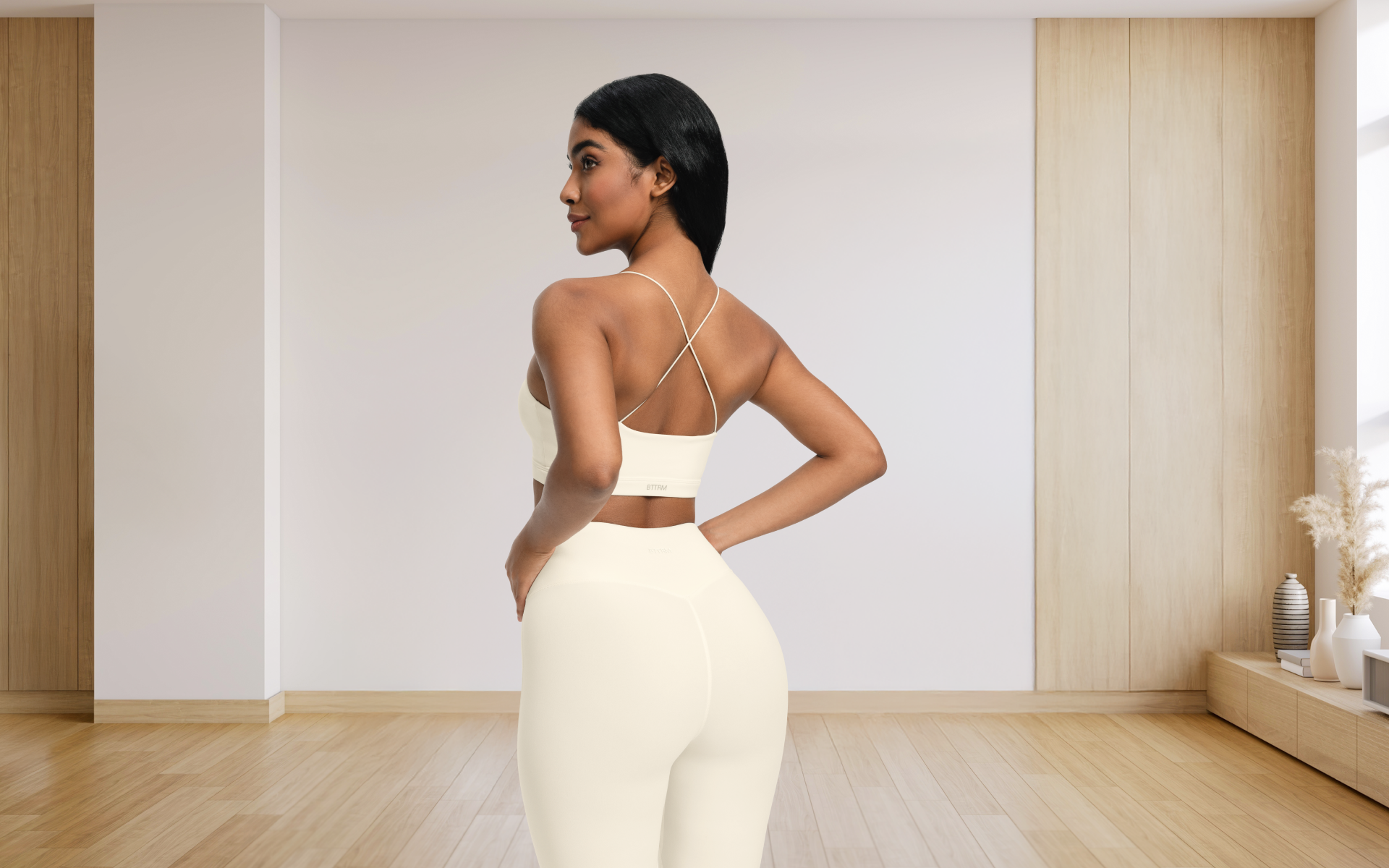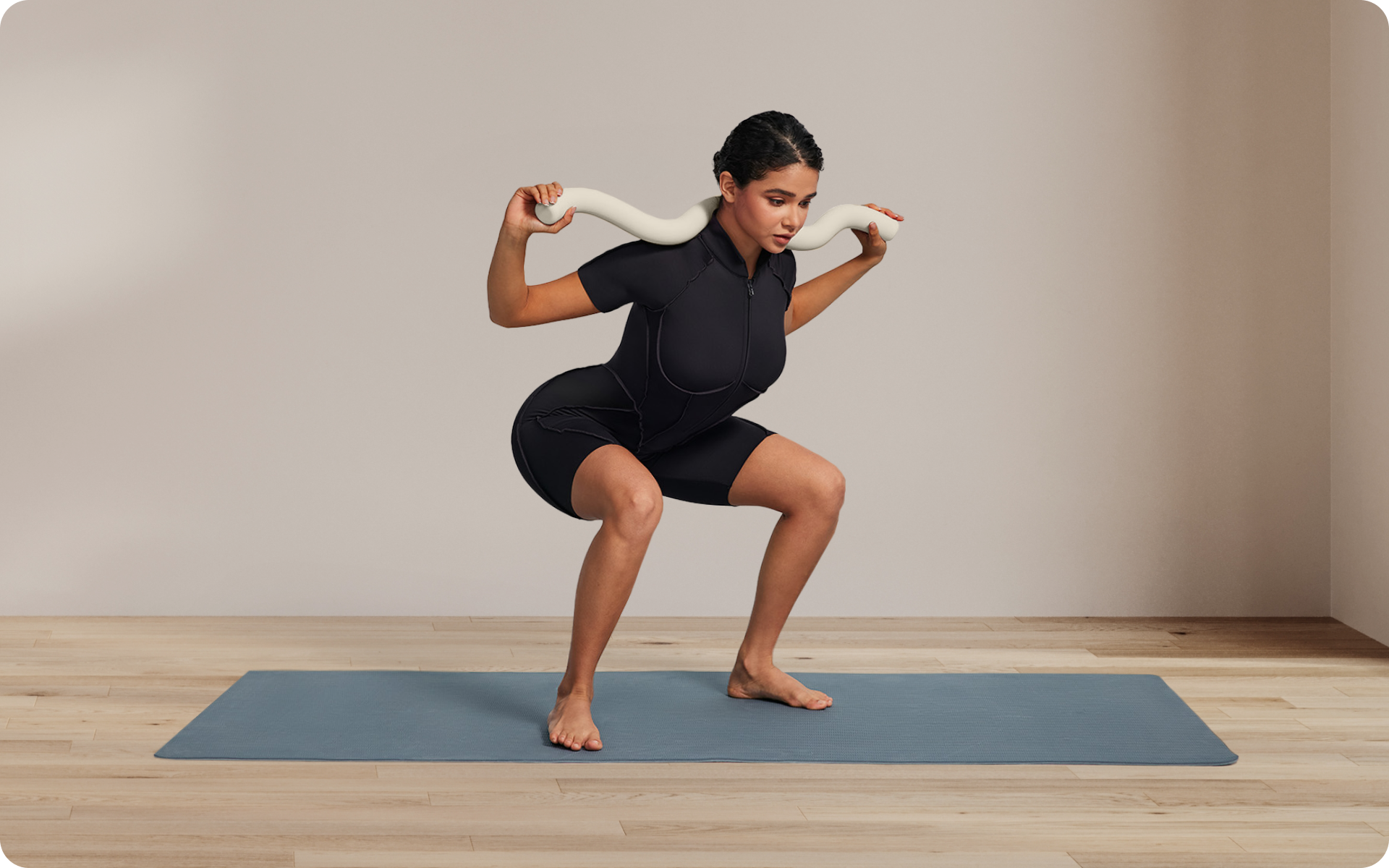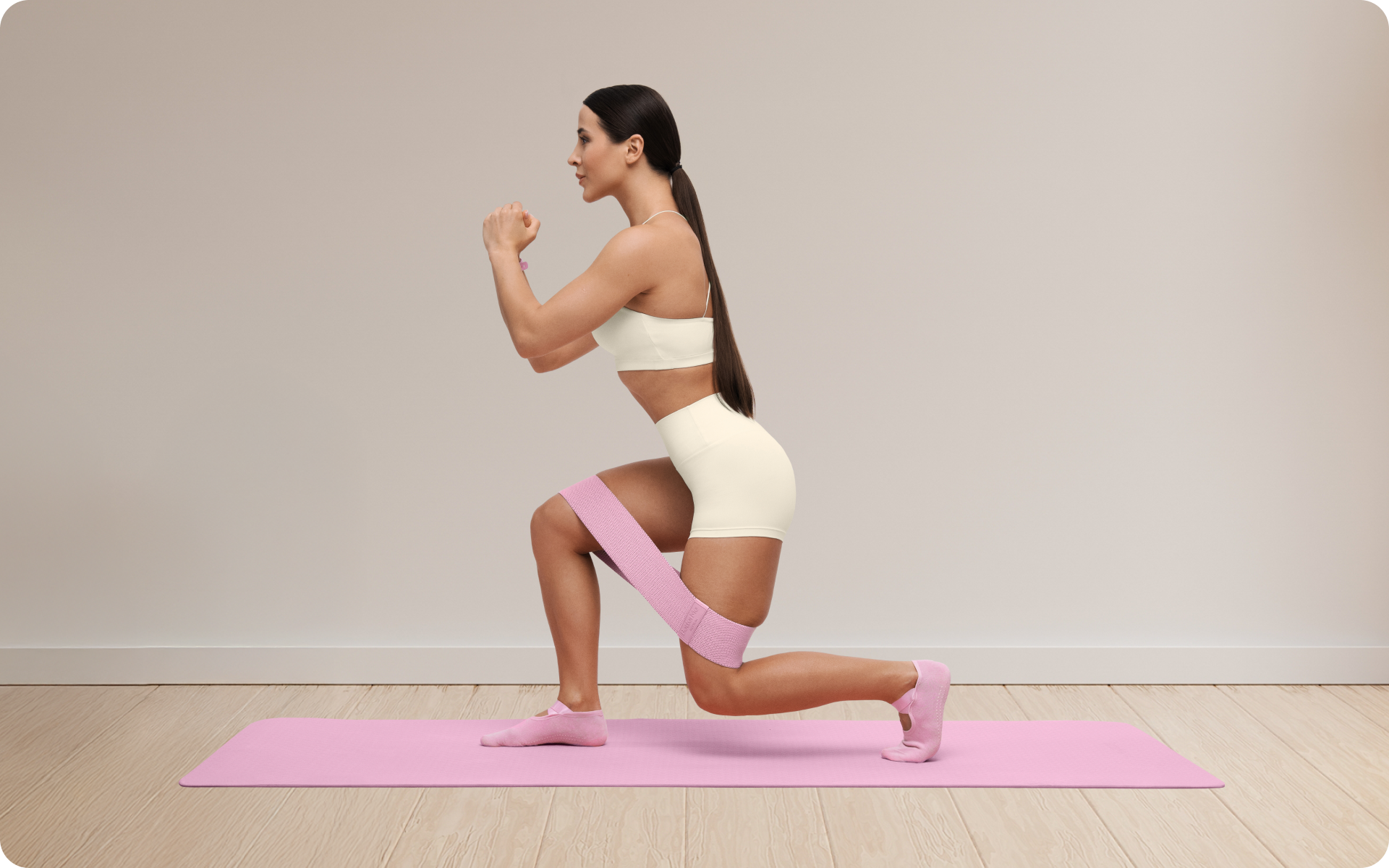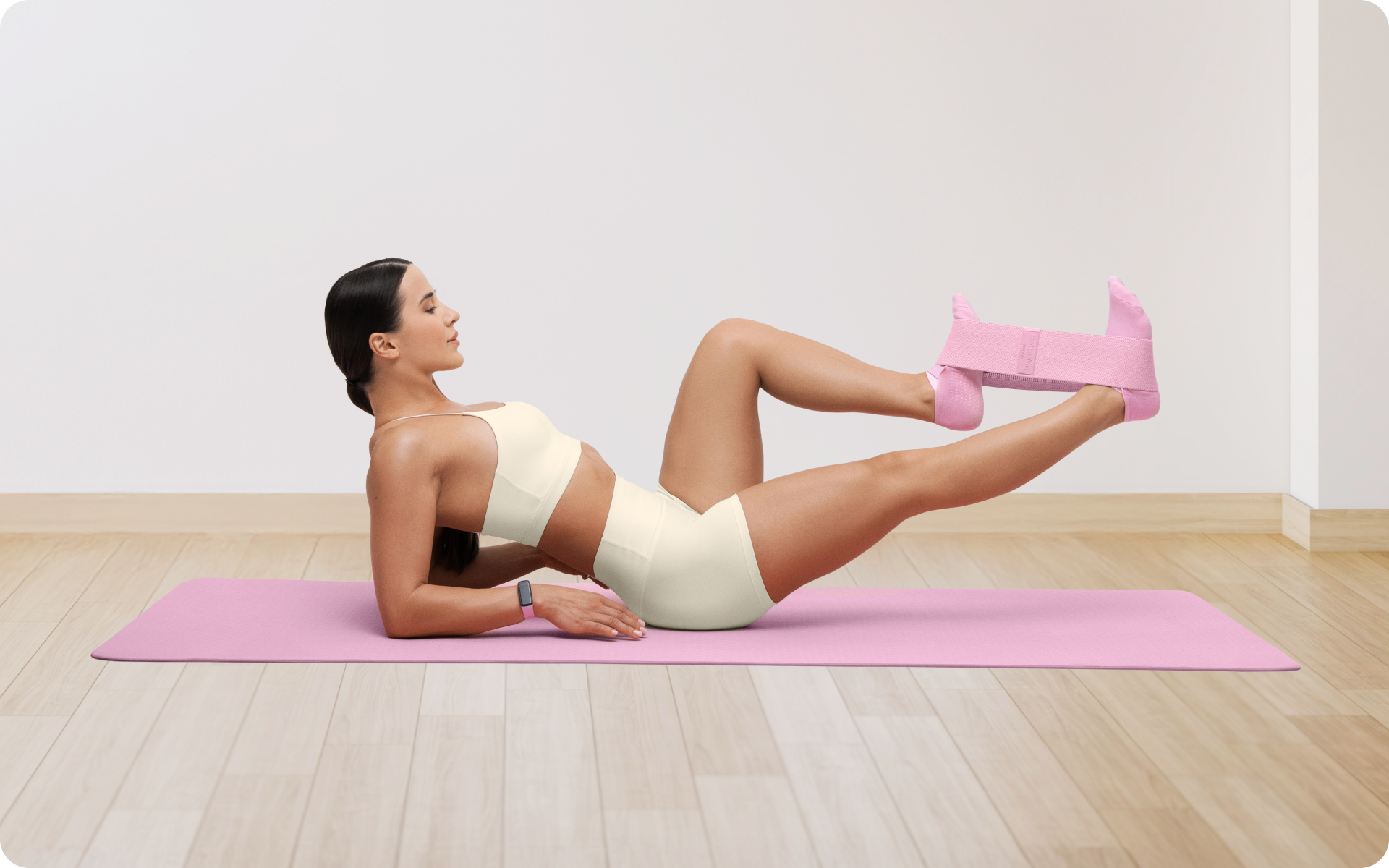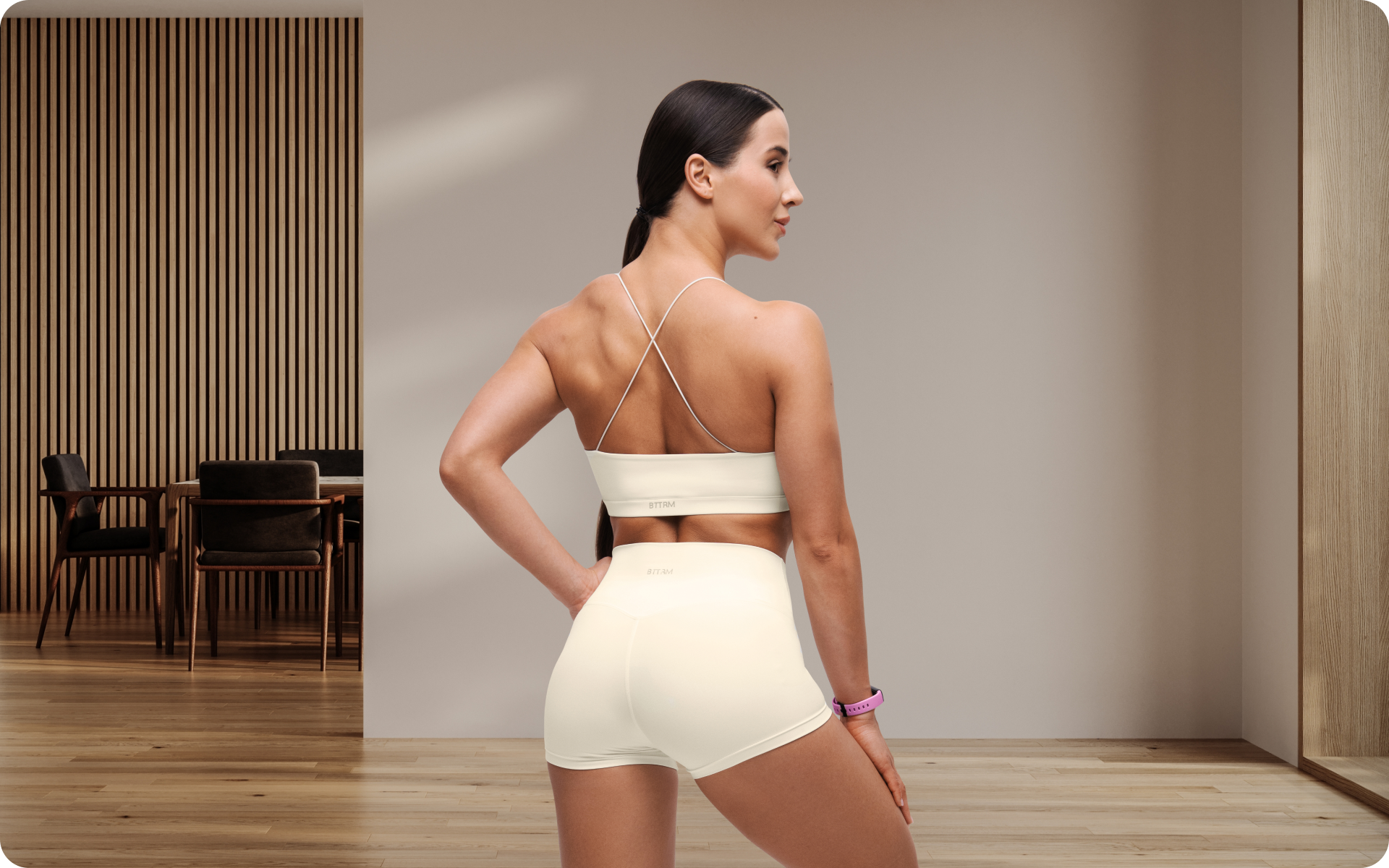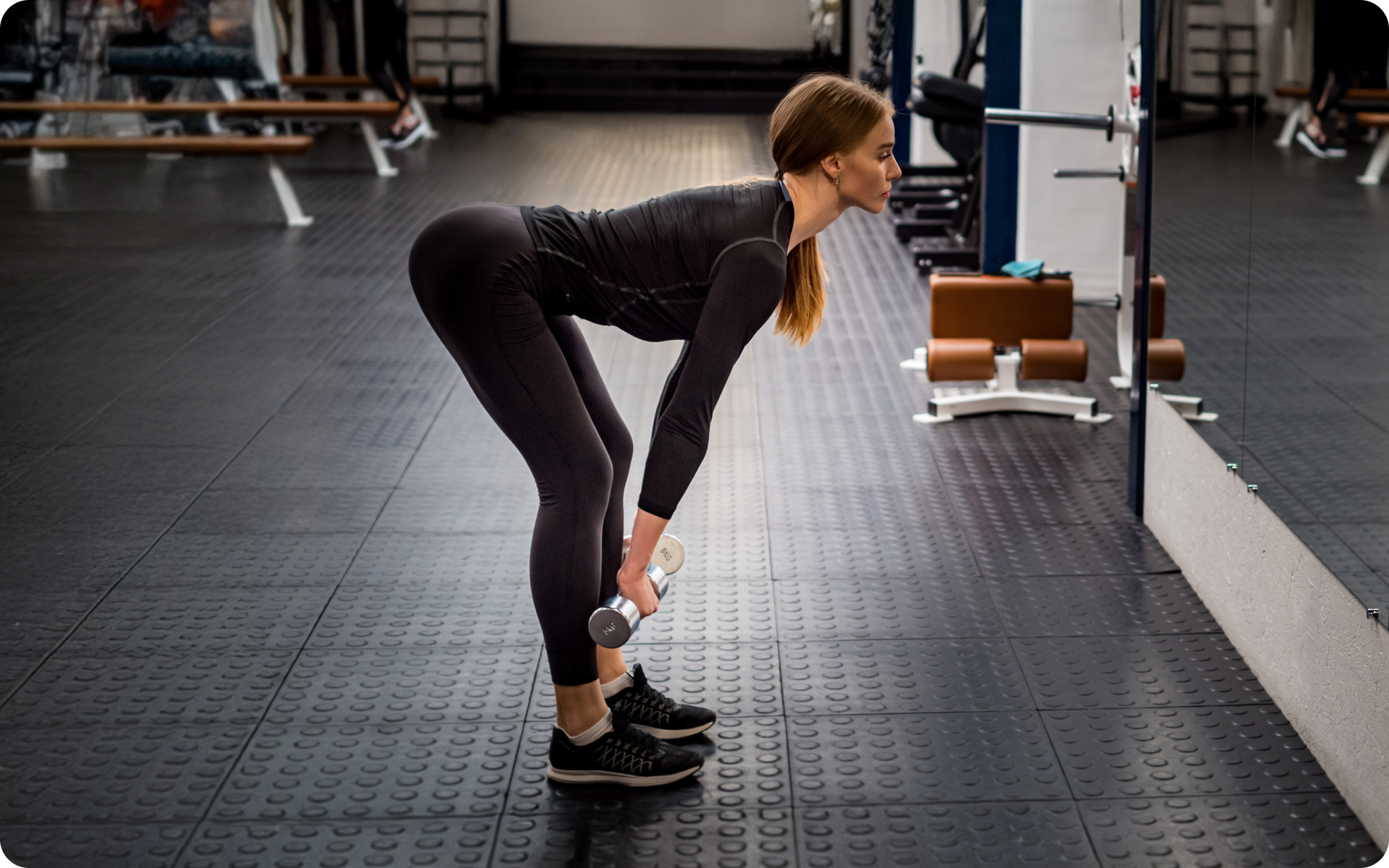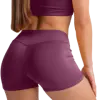A small waist and a big round butt, this is the dream for many, male and female alike. Not only can a trim waist and a peach bum help boost your confidence, but this largely desirable figure can make certain clothes fit a lot better. The benefits of strong abs and glutes, however, go beyond simple aesthetics.
Strong and toned abs not only look good in a crop top but they can improve your balance, and posture, help stabilize your core in everyday acts and tasks, can prevent back pain and can improve your performance in both sporty and sexual activity (17).
Stronger glutes can also help prevent injury in your knees, lower back, hamstrings and groin during sports and everyday activities. They also help improve your posture and improve athletic performance (14).
Exercising your abs and butt is a surefire way to make sure that these muscles are strong and look great in the mirror. Read on to learn more about which abs and butt workout are best for quick results, as well as how to structure a legs, abs, and buttocks workout and if you should exercise your abs daily!
Should I Start With Abs Or Glutes?
While some sources claim that it’s best to start with glutes/legs and end with abs, we highly suggest doing the opposite – start with your abs and end with a glute workout.
However, do not work your abs too much at the beginning for the following reasons (12, 11, 20)
Leg workouts demand more strength
If you overdo the core workouts in the beginning, chances are that you could be too fatigued to properly train your glutes later on. This, over time, could mean great progress in your abs, but slow and frustrating progress on butt growth.
Remember, the glutes are the biggest group of muscles in the body and thus they need proper care and attention to sculpt and grow. If you are going to do an abs and glutes workout at home (or at the gym), it’s better to have most of your strength concentrated on the leg/glutes workout than your core.
Isolation core workouts aren’t necessarily better
This is especially true for beginners.
If you have been working out for a while and have less body fat around your midsection, doing isolated core workouts could be better for you, especially if you want a more cut midsection and more visible abs (15).
However, as a beginner, compound workouts (exercises that work more than 1 muscle group at a time) as well as integrated core exercises will have better results for you.
Because such exercises work multiple muscles at the same time, they burn more calories which can be helpful in trimming any extra fat you may have around the midsection. Less fat in this area makes the stomach flatter, which in turn helps the abs become more visible.
In an older study published in 2013, researchers looking at the effects of integration core exercises vs isolation found that the former worked best to help maximize strength, improve endurance, enhance stability, reduce injury, and maintain mobility of the core (8).
Reasons why BetterMe is a safe bet: a wide range of calorie-blasting workouts, finger-licking recipes, 24/7 support, challenges that’ll keep you on your best game, and that just scratches the surface! Start using our app and watch the magic happen.
Many lower body workouts also work the core
This is the main reason why some people say that you do not need an isolated ab workout if you will be training your glutes and legs.
Lower body workouts are classified as compound exercises since they target not only the glutes but also the hips, thighs, abs, and lower back. Common glute and leg exercises like deadlifts and well as multiple variations of lunges and squats all work the core while you are doing them.
If you exhaust your abs too much in the beginning you may then be overworking them when doing any of the above-listed lower body exercises which could potentially fatigue you faster.
You need to warm up the core first
This is perhaps the most important reason why you should have core exercises first in your abs and glutes workout plan gym routine. We use our abs in many exercises, not just core and upper body workouts.
Because the core muscles are necessary in all forms of training, they must be warmed up well before getting into the training session. Failure to do so might lead to injury and can also hinder/slow down your performance during the session. A quick core warmup can involve up to 5 minutes of a combination of planks, bird dog, mountain climbers and bear crawls.
Can I Train Legs And Abs Together?
Yes, you can. And you do not even need to do separate isolated exercises to activate and strengthen the abs.
As stated above, many lower body workouts also target and exercise your core muscles which over time, helps strengthen them. To help keep your core muscles activated through your abs and workout routine, make sure to keep your core braced.
In one study published in 2014 in The Journal of Physical Therapy Science, researchers found that bracing your core helps activate these muscles, specifically the left rectus abdominis (abs) and both internal and external obliques (located on the sides of the abdominal area – think love handles (3).
Can Training Abs Make Your Waist Bigger?
Yes, it can, but not in the way you think.
Exercising your abs may make your waistline bigger not due to extra fat but due to muscle and muscle hypertrophy. When you work any muscle group, with resistance training in particular, small microscopic tears can occur to the muscle fibers as a result. This is a normal part of the muscle-strengthening process.
Once you stop working out and rest, the body will begin the repair process. The body uses protein to help repair and rebuild the damaged muscle fibers. This process also helps with muscle adaptation -further resulting in bigger and stronger muscle fibers, helping them deal with higher levels of resistance or weight during your next workout.
Your abs are not exempt from muscle hypertrophy. Working your core muscles will make them bigger over time, and this is why very fit people will have pronounced abs. If you already have a larger waistline, it could get bigger too, but from increased muscle mass instead.
If you continue to work out and most importantly maintain a healthy calorie deficit diet, the excess body fat that covers your abdominal muscles will gradually decrease over time. Less fat in the abdominal area means a smaller waist, even with gradually growing core and ab muscles.
For those with already flat stomachs but are worried that training abs will change this, we’d like to assure you that the change will very likely be minimal. Core muscles will not become as big as the biceps. Plus working out also helps reduce your overall body fat and thus the waist will likely go back to as small as it was, if not smaller.
Read more: Workout For Lower Butt: Exercises For A Firmer, Perkier Bum
How Long Should A Workout Be?
As a general rule, all adults should be getting at least 150 minutes of moderate-intensity aerobic activity a week and should include muscle-strengthening exercises at least twice a week. Basically 30 minutes of exercise a day, 5 days a week (7).
This, however, is just a simple guideline, not a rule set in stone. Because of the many existing barriers to physical activity (1, 2), the time one dedicates to working out can vary greatly from person to person.
Depending on how you are feeling or what’s going on, you can divide your workout durations as follows (6)
- Short workout days – A session on this day can be anywhere between 20 to 30 minutes. Because you do not have a lot of time, the workout should be high-intensity to help burn a lot of calories.
- Long moderate workout days – Such days are great for full-body workouts. You can combine both cardio and weightlifting on such days. Exercise sessions on such days can last anywhere between 45 to 90 minutes
- Active recovery days – Unlike passive recovery days where you can be a couch potato and simply let your muscles rest, active recovery calls for some sort of easy workout or movement. Such sessions typically last 30 to 45 minutes.
Exercises done on recovery days help stretch muscles, which helps reduce soreness and DOMS, as well as increase range of motion, reduce stress levels, and increase calorie burn. Perfect exercises for active recovery days include yoga, self-massage with a foam roller, swimming, yoga, cycling, or walking.
BetterMe app will provide you with a host of fat-frying fitness routines that’ll scare the extra pounds away and turn your body into a masterpiece! Get your life moving in the right direction with BetterMe!
What Causes Low Belly Pouch?
A lower belly pouch can be caused by multiple reasons including (19, 18)
- Bloating – Due to gas or eating too much during lunch/dinner. The issue could also be brought along by issues like IBS, constipation, ovarian cysts, etc.
- Dietary choices – Eating on a calorie surplus leads to excess calories being stored in the body as fat. Extra fat can cause the lower belly to get bigger.
- Lifestyle choices – A bad diet combined with poor sleeping habits and lack of exercise can also lead to a bigger belly, starting with a lower belly pooch.
- Pregnancy – Once a woman gives birth, the belly does not automatically go away. The bulge can be due to fluid retention or abdominal muscle separation.
- Menopause – Estrogen level decrease, insulin resistance, sleep disruptions, and decreased muscle mass are some factors associated with menopause. Individual experiences can vary, however, these factors can lead to weight gain that may reflect in a bigger lower belly.
- Alcohol – It is just empty calories and carbs and is the biggest cause of big bellies in men.
The Best Abs And Glutes Workout With No Equipment
No gym membership or equipment at home? No problem. You can still get a good core and glutes workout without them.
Body weight exercises are not only low cost and convenient – as they can be done anywhere – but they can also help improve functionality, are easy to adjust to whatever fitness level you are currently at, and above all, are quite effective in both weight loss and muscle growth (13, 16).
Here are some of the best home workouts to lose belly fat and build your glutes with zero equipment:
Lateral lunge with crunch
By themselves lunges are best known as glute exercises while crunches are primarily a core workout. Combining both in a single move creates a compound move that directly targets your glutes and core.
- Start with your feet shoulder-width distance apart, slight bend in the knees and chest up.
- Step your right leg out to the side as you push your hips back, bending your right knee while leaving your left leg straight.
- Then, drive off your right foot to reverse the movement, exploding back to center, driving your right knee to chest.
- Balancing on your slightly bent left leg, bring your hands wide outside your head. Twist through your core to meet your right knee with your left elbow performing a standing crunch.
- Do 3 sets of 10 on your right side before switching to the left side and repeating the same.
Donkey Kick With Elbow-To-Knee Touch
Donkey kicks mainly target the buttocks and hamstrings directly while elbow-to-knee touches/crunches are great for the core muscles, especially the obliques.
- Start on all fours, with your hands directly under your shoulders and knees under hips.
- Draw your stomach in while bracing the core, then simultaneously kick back the right leg and raise your left arm straight out.
- Keeping your spine aligned, bring back the right knee towards the core and draw the extended arm into the core as well.
- Kick back once again and extend the arm back out. This counts as 1 rep
- Do 3 sets of 10 to 12 reps per side.
Single Leg Glute Bridge to Crunch
- Start by lying on your back and bend the knees at 90 degrees angle. Place your hands behind your head, elbows out to the sides.
- Keeping your right foot on the mat, lift your left leg, sending it straight above you.
- Brace the core then press through the heel of your right foot to slowly lift your hips up, performing a single leg glute bridge.
- Slowly lower your hips to the mat to return to the starting position.
- Then, perform a cross body crunch, lifting your shoulders as you bring your right elbow to meet your left knee.
- With control, lower your shoulders to the mat, keeping your left foot in the air.
- This is one rep. Do 3 sets of 8 reps on each side
What Is The Best Gym Workout Plan For A Flat Stomach And Big Bum?
The best gym abs and butt workout plan is one that allocates two days a week to work these muscles. Working any muscle group too much could be detrimental to progress. Just two days per week allows time for rest and recovery which translates into increased muscle strength but also hypertrophy (aka muscle growth).
Some exercises that you can add to your ab and glute routine include
- Good morning – They target your hamstrings, gluteus maximus, erector spinae, and lower back muscles.
- Dumbbell squat with an oblique twist – Squats are a popular lower body workout that targets the glutes, quads, hip flexors, calves and abductors. The oblique twist targets the external obliques and internal obliques as well as the rectus abdominis.
- Weighted glute bridges
- Kang squats – A combination of the standard squat with good mornings
- Squat pulses
- Walking lunges
- Burpees
Read more: Butt Lift Workout Guide: Top 20 Sculpting Moves for Toned Glutes
FAQs
Should I Do Abs Everyday?
No, you should not.
Abs, like every other muscle group, needs ample time to recover and repair after exercise. This will help them recover and grow, and most importantly, will prevent the overtraining syndrome (10).
Can You Train Abs In 30 Days?
Yes, you can. Consistently training a muscle group will cause hypertrophy where it grows bigger and stronger. However, 30 days is not the magical answer for abs, especially if you have a lot of body fat.
Noticing improved definition in your Abs in 30 days/4 weeks could be a possibility for those with less than 10 percent body fat and a possibility for those with 10 to 11 percent body fat. Any more than that and you will need patience and more time to achieve this (9).
Is Waist Size Genetic?
Yes, unfortunately, your genes can affect your waist size as they determine where you are most likely to store body fat (4, 5). However, genes are not the only influencing factor, with healthy behavioral, environmental, and dietary changes, you can fix this for the better.
Which Is The Best Abs And Glute Machine?
There is no machine dedicated to working both the glutes and abs. However, since lower body workouts also target the abs, using something like the stair stepper or the squat rack for multiple squat variations can indirectly target the core, working these muscles too.
The Bottom Line
An ab and butt workout is a good way to not only improve your health but also lose weight and gain more self-confidence. Remember that while working out goes a long way in helping muscle growth and weight loss, you will not achieve your goals if you do not change your diet for the better.
DISCLAIMER:
This article is intended for general informational purposes only and does not serve to address individual circumstances. It is not a substitute for professional advice or help and should not be relied on for making any kind of decision-making. Any action taken as a direct or indirect result of the information in this article is entirely at your own risk and is your sole responsibility.
BetterMe, its content staff, and its medical advisors accept no responsibility for inaccuracies, errors, misstatements, inconsistencies, or omissions and specifically disclaim any liability, loss or risk, personal, professional or otherwise, which may be incurred as a consequence, directly or indirectly, of the use and/or application of any content.
You should always seek the advice of your physician or other qualified health provider with any questions you may have regarding a medical condition or your specific situation. Never disregard professional medical advice or delay seeking it because of BetterMe content. If you suspect or think you may have a medical emergency, call your doctor.
SOURCES:
- Barriers to participation in physical activity and exercise among middle-aged and elderly individuals (2013, pubmed.ncbi.nlm.nih.gov)
- Barriers to Physical Activity (n.d., physio-pedia.com)
- Comparison of the Effects of Hollowing and Bracing Exercises on Cross-sectional Areas of Abdominal Muscles in Middle-aged Women (2014, ncbi.nlm.nih.gov)
- Genetic and behavioral determinants of waist-hip ratio and waist circumference in women twins (1998, pubmed.ncbi.nlm.nih.gov)
- Genetic and environmental influences on waist-to-hip ratio and waist circumference in an older Swedish twin population (1999, pubmed.ncbi.nlm.nih.gov)
- How Long Should You Work Out (2022, verywellfit.com)
- How much physical activity do adults need? (2022, cdc.gov)
- Integration Core Exercises Elicit Greater Muscle Activation Than Isolation Exercises (2013, journals.lww.com)
- Is It Possible to Get Abs in 30 Days? (2021, medicinenet.com)
- Overtraining Syndrome (2012, ncbi.nlm.nih.gov)
- Planning to Start Exercising? Start with Your Core First (2020, health.clevelandclinic.org)
- Should You Do Abs Before or After a Workout? Here’s What 2 Trainers Want You to Know (2019, popsugar.com)
- The advantages of body-weight exercise (2022, health.harvard.edu)
- The Advantages of Strong Glutes (n.d., livestrong.com)
- The effects of performing integrated compared to isolated core exercises (2019, journals.plos.org)
- The Impact Of Ten Weeks Of Bodyweight Training On The Level Of Physical Fitness And Selected Parameters Of Body Composition In Women Aged 21-23 Years (2015, researchgate.net)
- The real-world benefits of strengthening your core (2012, health.harvard.edu)
- What Causes Lower Belly Fat? (n.d., livestrong.com)
- What’s Causing My Belly Bulge, and How Do I Treat It? (2023, healthline.com)
- Why You Should Work Your Abs First (2014, menshealth.com)




